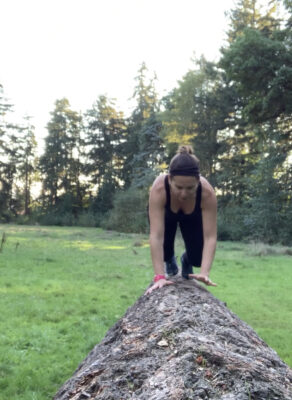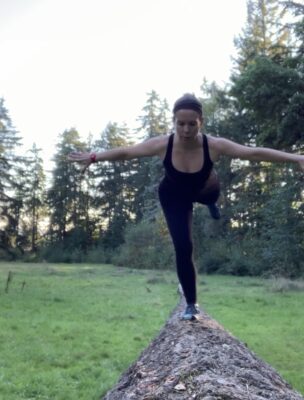MenopauseMenu guest blog post by Rebecca Francis, Movement Coach and owner of Build the Movement, LLC. You can also find her on Facebook and Instagram @buildthemovement.
In a recent survey I created to find out what people struggle with most when it comes to their movement practice, the number one response (out of 13 possible options) was motivation, followed closely by maintaining consistency.
I was not too surprised at these responses, given these are things I often hear from my clients, my friends, and my family members, usually followed by the statement, “Maybe I’m just lazy.”
And it has got me wondering:
How much of our struggle with motivation and consistency is related to genuinely being out of sync with what our bodies actually need, versus being out of sync with what we are told we should be doing, based on guidelines put forth by someone else?


While general exercise and movement guidelines might be helpful for some, it’s important to acknowledge that they do not take into account many factors, such as injury, mobility limitations, chronic illness, exercise intolerance, etc., not to mention access to safe spaces to move.
While getting in 10,000 steps a day, for instance, may be a fantastic and enjoyable thing for some to pursue, that recommendation is entirely out of reach (and could even be harmful) for others.
If we are basing the goals for our movement practice solely on what we think we should be doing according to generic health advice (even if it comes from an “expert”) and that advice doesn’t take into consideration our own unique challenges and experiences, then we will likely encounter dissonance. This dissonance may show up as reluctance to move, or difficulty consistently connecting with movement.
If we elevate general health recommendations over our own enjoyment and feelings of pleasure in movement, or if we use exercise and movement as punishment, or as a way to “earn” our food, we further reinforce that disconnection from our own bodies, and our own lived experiences. And our chance of injuring ourselves increases.
Consider these five questions:
- What’s at the heart of your desire to move? (What percentage of that is internal versus external?)
- What does moving consistently look like or mean to you?
- When you don’t move as often as you’d like, how do you feel mentally, physically, emotionally?
- What benefits do you notice and personally enjoy when you are moving regularly?
- What movements do you enjoy?
If, after spending some time reflecting on those questions you are still struggling with motivation and consistency, here’s something else to consider: Lack of motivation is a symptom, not, in and of itself, the problem.
I don’t believe in “laziness.”
Often when we use that word to describe ourselves when we don’t feel like moving or exercising, we are discounting or ignoring crucial bits of information our bodies may be trying to convey…perhaps an underlying health issue that needs attention from a physician, acupuncturist, therapist, chiropractor, nutritionist, sleep specialist, etc.
- Is it laziness, or are you chronically dehydrated?
- Is it lack of motivation, or are you not getting enough sleep to support regular movement?
- Is it laziness, or are you under-nourishing yourself?
- Is it lack of motivation, or are you navigating an untreated health issue?
- Is it laziness, or are you navigating complex trauma, depression or grief?
- Is it lack of motivation, or are you trying to follow one-size-fits-all health advice that isn’t appropriate for you?

With any of the above issues (and plenty of others not listed), the appropriate amount of movement and exercise for you may look very different than the recommendations made for the general public, and honestly, my friends, that is a beautiful thing.
Because you are an individual — and a dynamic one, at that. And health recommendations, no matter the source, are NOT one size fits all.